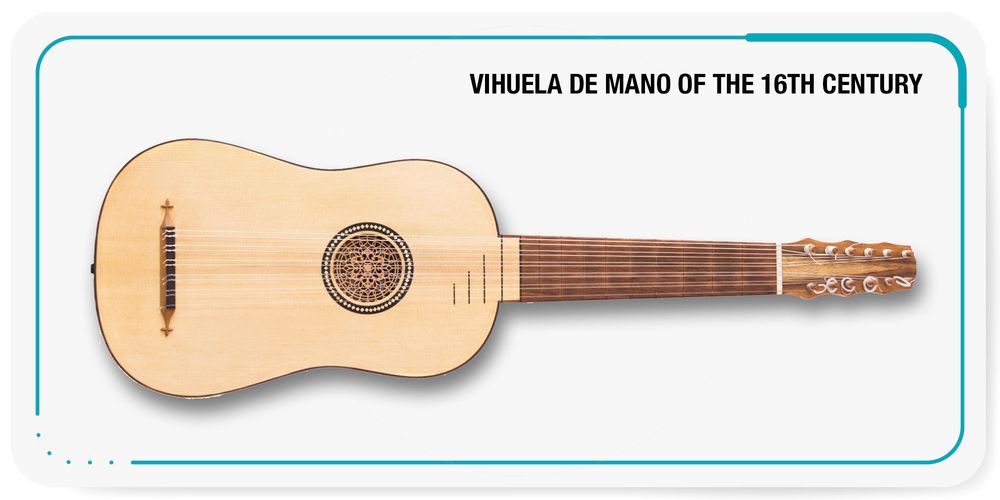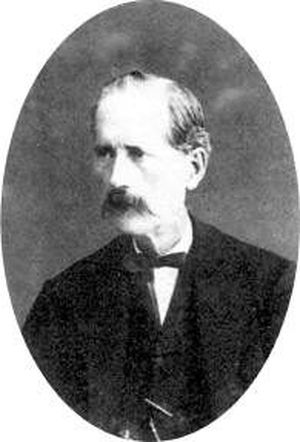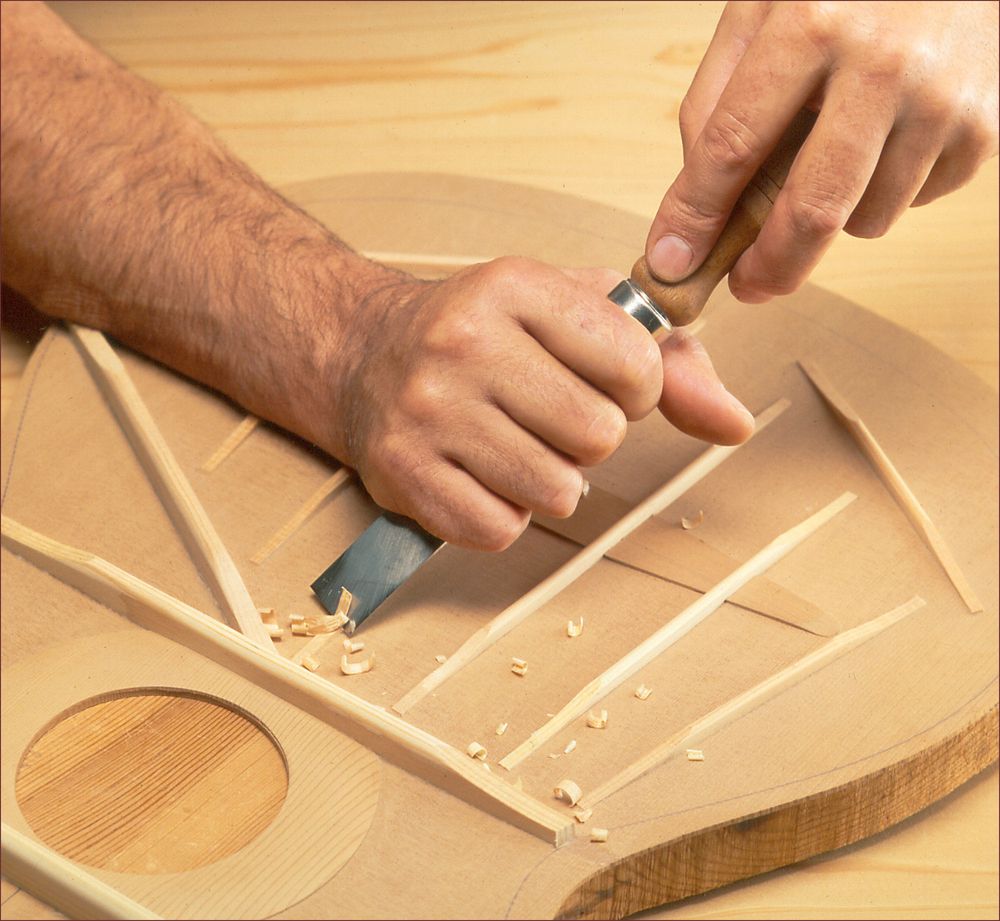2. The Classical Guitar
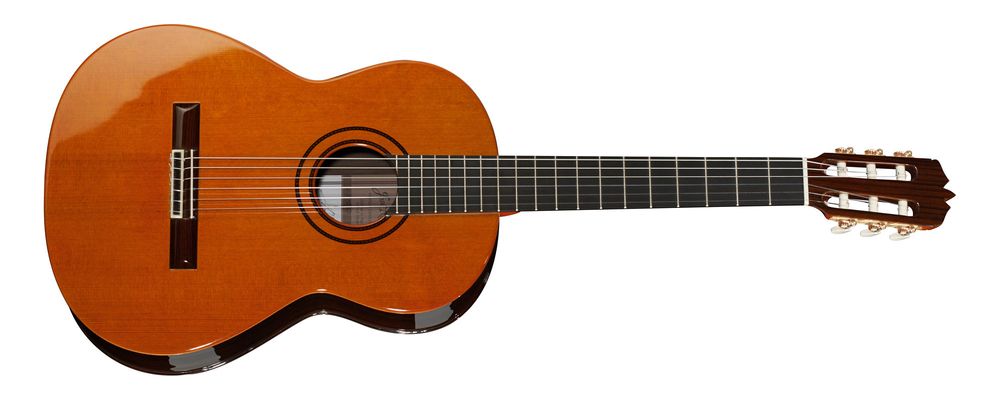
Classical Guitar
Originally, classical guitars were designed to perform the works of classical composers like Tarrega, Carcassi, or Sor. In the early 1960s, when rock 'n' roll was on the rise, those who dared to use classical guitars to play songs by Elvis and other rock legends faced ridicule from purists who considered it a misuse of the instrument. However, with the immense success of Eric Clapton's "Unplugged" album, even the most dedicated purists began to see the classical guitar's warm and soothing tone as an essential part of commercial music production. Despite these changes, it's essential to recognize that the evolution of the classical guitar was heavily influenced by the development of classical guitar music during the 19th century.
Development:
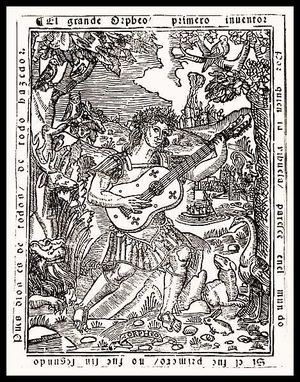
Vihuela book by Luis Milan @ 1536
(by Wikipedia Public Domain)
Before the 19th century:
"Guitar-like" instruments have a history spanning over 5,000 years. Evidence of ancient guitars can be seen in the relief from the temple of Hammurabi in Babylon (1792 - 1750 BCE), which depicts an ancient Egyptian guitar. These early instruments had small bodies since they lacked a bracing system. The Spanish Vihuela from the 16th century already bore a striking resemblance to the modern guitar. As time progressed, especially in the Renaissance, Baroque, and Romantic eras, the Vihuela saw further development, primarily in Spain.
By the 17th century, the Renaissance guitar had made its way to the French court of King Louis XIV. Shortly before the 18th century, the Baroque guitar, which initially featured four to five courses of strings, received a sixth string – much like what is still built today.
1860-1892:
Throughout the 19th century, the classical guitar evolved into the familiar form it holds today. A pivotal figure in this transformation was the Spanish guitar maker Antonio de Torres (1817-1892). Torres played a crucial role in shaping the modern guitar. He introduced innovations like a larger body, developed the first bracing system on the soundboard, adjusted the bridge's position, and enhanced the soundboard's resonance by using thinner wood. For the back and sides, Torres employed materials such as rosewood, maple, or cypress. Initially, his influence extended across Spain, and later, it radiated throughout the rest of Europe, all thanks to his groundbreaking innovations. Torres also became the first luthier to differentiate between concert and Flamenco guitars, marking a significant moment in the guitar's history.
Modern Times:
In today's classical guitars, many of the crucial aspects found in Torres' 19th-century models have been preserved. However, notable changes have been made primarily to the guitar's interior. For instance, the bracing system, which plays a vital role in sound volume, has undergone modifications over time.




